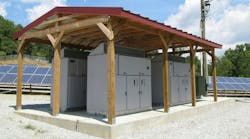When measuring reliability, electric utilities must go beyond the percentage of time the power is flowing and look at a bigger picture of their operational health. “Keeping the lights on” is a significant part of a utility’s value, but that’s like saying a person is healthy as long as he or she is living and breathing.
In the early 2000s, APPA began discussing a way to measure a utility’s reliability, going a step further than day-to-day operations to try and measure a utility’s trustworthiness and dependability. The Reliable Public Power Provider (RP3) program was born in 2005 and currently has 184 designated utilities. RP3 is open to all public power utilities seeking to document and publicize their excellence in the areas of reliability, safety, workforce development and system improvement.
Ramping Up Reliability
Reliability statistics are undoubtedly valuable. They are the quantitative basis for good decision-making and come in many forms, such as the average service availability index. On the whole, reliability statistics are excellent for self-evaluation. That’s not to say utility-to-utility comparisons cannot be made, but differences in each electrical network — such as weather conditions, number of people served, customer willingness to pay for reliability and equipment used — limit the value of such comparisons.
The RP3 program also takes into account a utility’s membership in a mutual aid network to help with the burden of major storms or other emergencies. In addition, utility preparation for major disasters, North American Electric Reliability Corp. compliance and security are also important.
Focusing on Safety
Cultivating a culture of safety is a challenge that takes the time and commitment of all utility personnel. Utilities must keep their manuals up to date, follow standards, conduct regular safety meetings and perform disaster drills. In addition, they must investigate accidents and file reports on near-misses to mitigate repeat incidents.
To attain recognition in the RP3 program, each utility must demonstrate that it has implemented a nationally accepted safety program (by adherence to a safety manual or other innovative approach), uses safe work practices, and calculates and tracks benchmarking information as it relates to safety.
Fostering Workforce Development
Most would agree that a utility’s greatest asset is its employees. The implementation of comprehensive programs that follow the life cycle of an employee — from recruitment to skills development for growth and retention through the succession planning process — establishes a foundation for the success of both the utility and its employees.
Utilities should encourage their employees to attend conferences, workshops and webinars to keep them up to date on industry standards and best practices. To support upward mobility, companies also should consider reimbursing staff for tuition for higher education.
Improving Electrical Systems
System improvement is essential for long-term electric system reliability and performance. Ensuring that a utility’s electric system is well-maintained by implementing a comprehensive improvement program shows employees and the public that your utility is committed to self-preservation and efficient operation. Funding for system improvements, whether for
basic maintenance or for R&D, is money well invested.
To attain points in the RP3 program’s system improvement section, a utility must demonstrate that it participates in a national, regional or local R&D program, and regularly addresses power supply, system planning and energy-efficiency issues. In addition, a top utility will perform improvement projects to maintain the system’s integrity and efficiency.
Excellence in each one of these disciplines goes hand in hand. For example, a well-educated workforce is more likely to follow safe work practices, and better system improvement procedures will lead to better system reliability. Each piece is part of a larger puzzle that, hopefully, paints a picture of a reliable utility.
RP3 will continue to grow as members of the review panel evaluate applications continue to suggest changes and improvements to measuring success. While utilities primarily boast about reliability to customers and public utility commissions, programs like RP3 have the potential to reap tangible benefits when it comes to demonstrating credit-worthiness to bond rating agencies and sound safety practices to insurance providers.
Every three years, the utilities are required to reapply for the program. Through their continued involvement, the companies can work with APPA to boost reliability both now and in the future.
Michael Hyland is senior vice president, engineering services, with the American Public Power Association.

